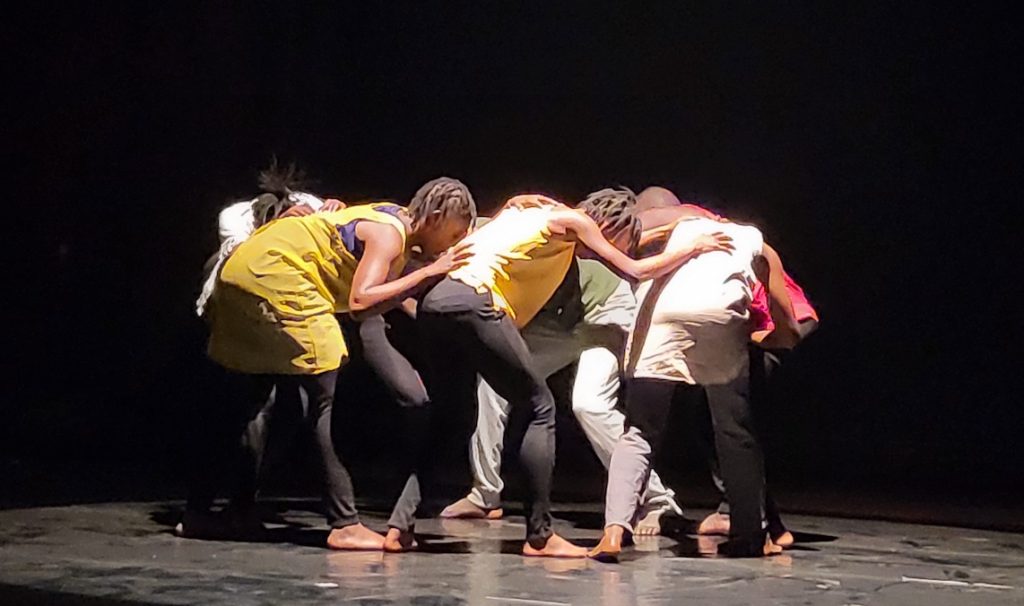tanz.dance: pay-per-view “scrollytelling” - Vancouver Ballet Society
- Home
- Features 2020 - 2023
- tanz.dance: pay-per-view “scrollytelling”

By Philip Szporer
In The slow erasure of a profession, Michael Crabb took a look at the state of dance criticism in a world of waning critical arts coverage, sparking appreciative responses from danceinternational.org readers. Below, Philip Szporer continues the conversation about how dance is covered today by introducing a sister publication offering online-only dance coverage, the bilingual tanz.dance. ~DI
On my online forages for reading material, something I do whenever a bit of spare time presents itself, it seems there is always something by which I am delighted. But would I be willing to pay for those articles? Arnd Wesemann, longtime editor of the German-language Tanz magazine, thinks I should be. About a year ago, he established the independent website tanz.dance, a stylish, colourful venture dedicated to pay-per-view digital storytelling.

When we spoke recently on a Zoom call, Berlin-based Wesemann explained that the site “is not about competing with longtime print publications that are there already.” But there’s no question that the traditional publishing industry is on the wane. People aren’t consuming print the way they used to. In this new era, online publishing is making inroads. And with elevated paper costs and a huge infrastructure removed, online publications are cheaper to produce (though websites themselves take a lot of building and maintaining).
Tanz.dance features, published in English and German, are well-written extended opinion pieces and interviews, accompanied by striking images, tackling heady themes from a globally diverse and inclusive perspective. There have been deep dives into how theatre can help combat racism, pandemic realities as experienced by Hong Kong’s dance community, and shamanic life in Siberia’s Lake Baikal district. The wide-open coverage has also championed important subjects like exploitation in textile factories in Bangladesh, which featured some terrific picture-led storytelling. That provocative piece details factory life and the misery in the manufacturing industry, and then shifts to question whether performance artist Marina Abramović is exploiting her workers. The article further considers how the arts sector treats the creative worker and the role of fair compensation in the arts.

To gain full access to tanz.dance, you must pay a small fee of a few euros via PayPal for each article. “You don’t subscribe. You enter the website and pick and choose your own selection of articles,” Wesemann says. Before purchasing, the reader is primed with vibrant images and just enough text to let them discover the subject behind the images.
A seasoned and incurably passionate journalist, Wesemann says he’s fighting for better writer fees. The idea is to “feed authors,” as he likes to say, as well as photographers, graphic designers, and translators. And it’s about sending writers into the field and finding stories that don’t appear elsewhere.
So do journalists make decent fees writing for tanz.dance? Without revealing details, he says, “We share the money in equal parts: writer, translator [Wesemann does the translating], graphic designer, and photographer all get exactly the same sum of money. The funds go directly to us.” Though he admits that hits to the site are still limited, German cultural coronavirus subsidies are keeping things afloat. Wesemann is using his personal list of contacts to connect and spread the good word. Further information is circulating on Facebook and Instagram.
Beyond eye-catching photos and graphics, the ethos of tanz.dance is telling “well-made stories,” he says. Wesemann’s goal is to move away from formulaic bite-sized reviews and profiles. “My idea was, why not do a kind of New Yorker of dance?” The legendary prestige weekly, now in its 97th year, is known for its lengthy well-crafted articles, and readers seek out The New Yorker for in-depth political and cultural coverage. I often hear comments from friends about how attached they are to the publication. My own household, truth be told, is drowning in stacks of the magazine, some read, some unread.

Will tanz.dance be an addictive digital staple that retains readers? Wesemann is banking on a flipping and scrolling younger generation to navigate what’s on offer. Any device with a touchscreen (mobile phone, laptop, etc.) allows for “a kind of finger dance across the screen,” he says. “We call it ‘scrollytelling.’” So convenience, technology, and lifestyle demands are leading the way. Which likely suits many dance artists, who may not have the time or inclination to grab a magazine or carry heavy books. “Here they have direct online access to the rest of the world,” says Wesemann.
The jury is out on whether implementing a paywall for this type of specialized online publication will be a deterrent, even with the very minimal user fees. Of course, it’s an experiment whose longevity demands a kind of solidarity between the reader and the publication (again, think of the loyalty that fans of The New Yorker have with that magazine). The appeal of tanz.dance will reside with a specialized readership that expects well-informed writing and enjoys its combination of glossy visuals and eclectic subject matter.

